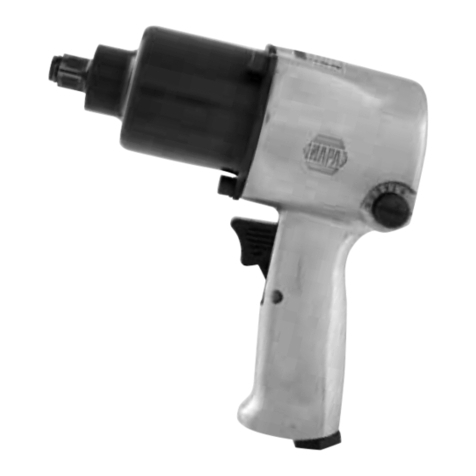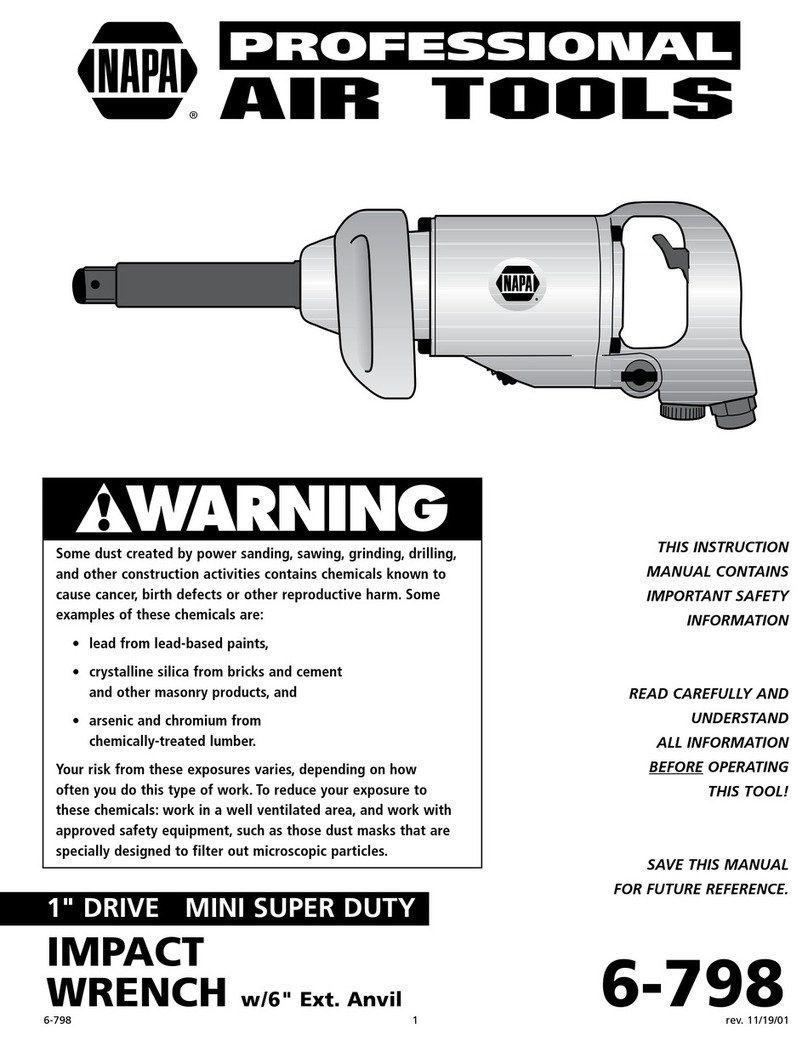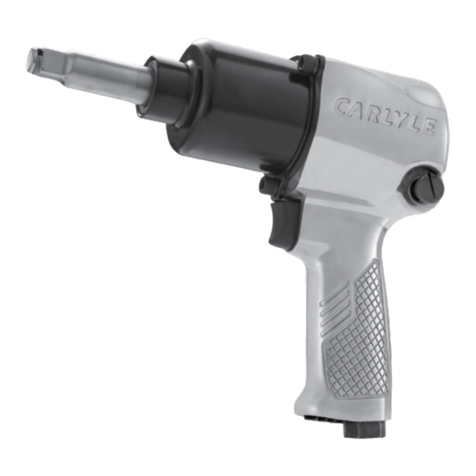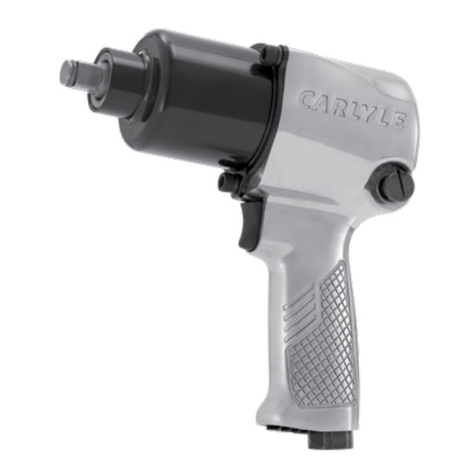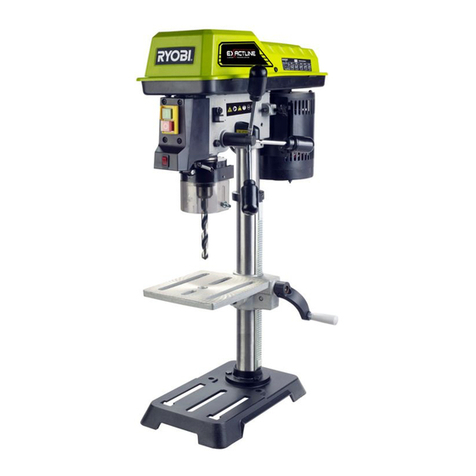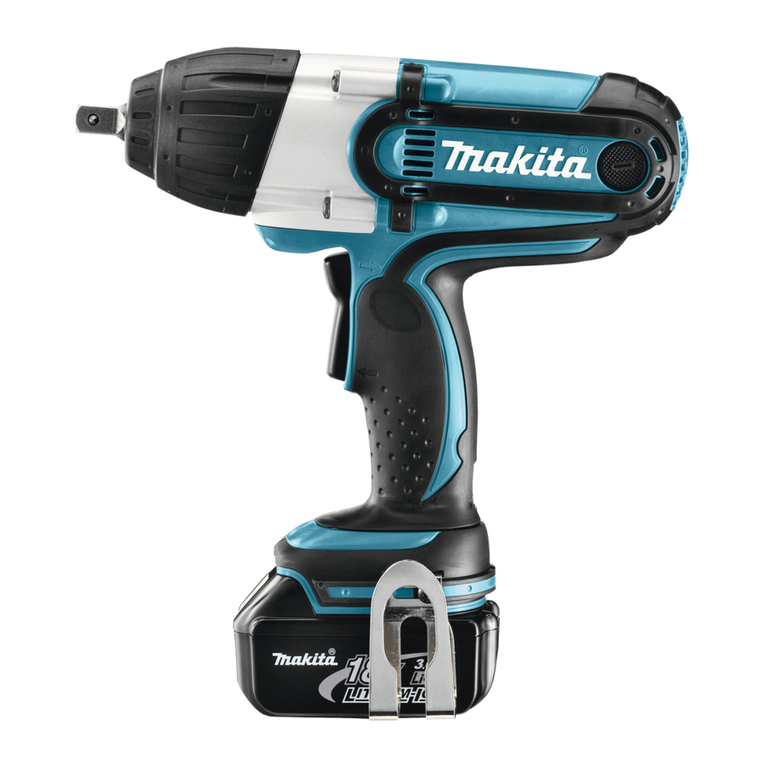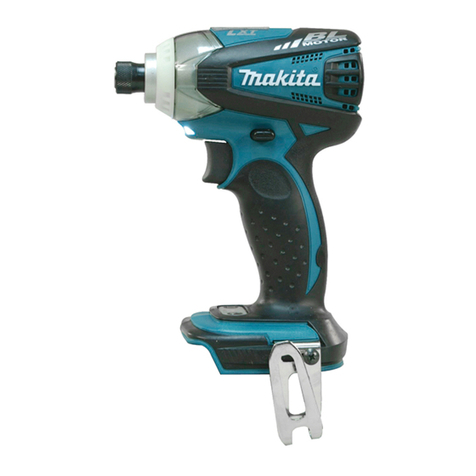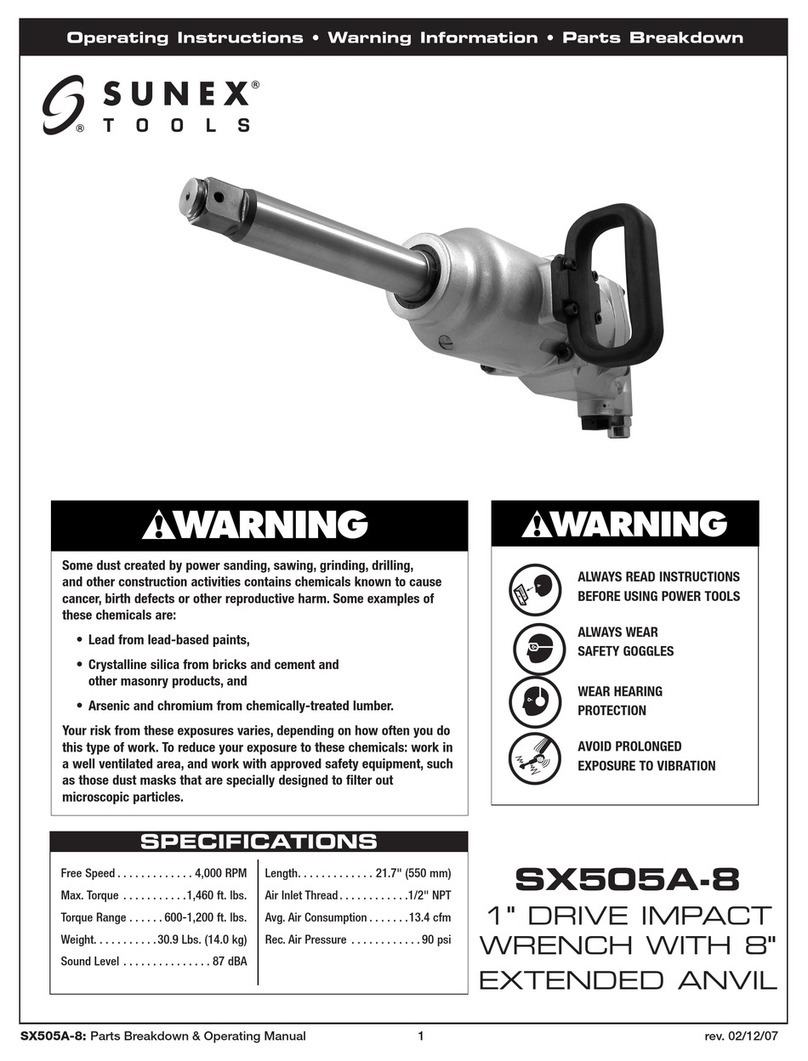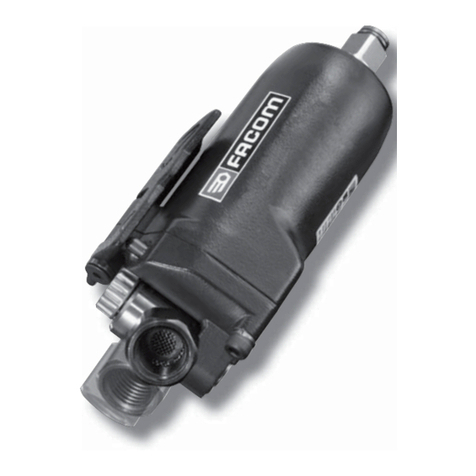PLEASE REVIEW ALL WARNING INSTRUCTIONS PRIOR TO OPERATION. SAVE THIS MANUAL FOR FUTURE REFERENCE.
AL NO SEGUIR TODAS INSTRUCCIONES DE LA LISTA ABAJO PUEDE
PROVOCAR LESIONES GRAVES
ESTE MANUAL DE INSTRUCCIONES
CONTIENE IMPORTANTES
INFORMACIONES DE SEGURIDAD.
LEA CUIDADOSAMENTE Y ASEGÚRESE
DE COMPRENDER TODAS
ESTAS INFORMACIONES,
ANTES DE PROCEDER
CON EL FUNCIONAMIENTO
DE ESTA HERRAMIENTA.
• Haga funcionar, verifique y mantenga
esta herramienta de acuerdo con el
código ANSI (Organización nacional
americana de normalización) para
herramientas portátiles con aire (ANSI
B186.1) y cualesquiera otros códigos de
seguridad y regulaciones aplicables.
• Para obtener la seguridad, resultados y
durabilidad óptimos de las
partes, haga funcionar esta
herramienta con una
presión máxima de 90 psig
(6.2 bar), utilizando una
manguera de aire con un
diámetro de 12.7 mm.
• Lleve siempre protección de impacto alto
para los ojos y la cara, al
funcionar o dar
mantenimento a esta
herramienta. Lleve siempre
protección para las orejas
al utilizar esta herramienta.
• Niveles de sonidos altos pueden
provocar una pérdida
permanente del oído.
Utilice una protección
para las orejas según las
recomendaciones de
su patrón las
regulaciones OSHA.
• Mantenga esta herramienta en
condición eficaz de funcionamiento.
• Los operadores y el personal de
mantenimiento deben físicamente
poder manejar el volumen, el peso y
la potencia de esta herramienta.
• El aire bajo presión puede provocar
lesiones graves. Nunca la dirija hacia Ud.
o hacia otras personas. Cierre siempre el
abastecimiento del aire, drene la
manguera de la presión del aire y
desconecte la herramienta
del abastecimiento del aire
antes de instalar, quitar o
ajustar cualquier accesorio
a la herramienta, o antes
de dar mantenimiento a
la herramienta. Al no seguir
estas instrucciones se puede provocar
lesiones graves. Las mangueras que
azotan pueden causar lesiones graves.
Verifique siempre para
detectar mangueras gastadas,
usadas o flojas y reemplacel
as inmediatamente. No
utilice los acoplamientos
de conexión rápida con
esta herramienta. Vea las instrucciones
para conocer el modo de
instalación adecuado.
• Las herramientas que funcionan con
aire pueden vibrar durante el uso. La
vibración, los movimientos
repetitivos o las posiciones
incómodas durante
periodos prolongados
pueden ser dañinos a sus
manos y brazos. Interrumpa el
uso de la herramienta si sobreviene una
incomodidad, una sensación de cosquilleo
o un dolor. Solicite una opinión médica
antes de volver a proceder con el uso.
• Coloque la herramienta sobre el lugar
de trabajo antes de hacer funcionar la
herramienta. No la apunte en dirección
de una persona y no juede con esta
herramienta.
• Un deslizamiento, una zancadilla y/o una
caída durante el funcionamiento de las
herramientas con aire pueden ser causas
importantes de lesiones
graves o de la muerte.
Asegúrese que no haya un
excedente de manguera
sobre la superficie donde
esté caminando o trabajando.
• Mantenga una postura equilibrada
y estable durante el trabajo. No
vaya demasiado lejos durante el
funcionamiento de la herramienta.
• Preve a y esté atento a los cambios súbitos
de movimientos durante el arranque y el
funcionamiento de cualquier herramienta.
• No transporte la
herramienta por la
manguera. Proteja la
manguera contra los
objetos afilados y
el calor.
• El eje de la herramienta puede
continuar brevemente su rotación
después del aflojamiento del gatillo.
Evite el contacto directo con los
accesorios durante y después del uso.
El uso de guantes reducirá el riesgo
de cortes y quemaduras.
• Mantengase alejado de la extremidad
giratoria de la herramienta. No lleve
joyas o ropa holgada. Fije el
pelo largo. El escalpar
puede ocurrir si el pelo no
se mantiene lejos de la
herramienta y accesorios.
La asfixia puede ocurrir si los
colllares no se mantienen lejos de la
herramienta y los accesorios.
• Las brocas del taladro pueden doblarse
de pronto y provocar la rotación de la
pieza del trabajo o de la
herramienta, provocando
lesiones a los brazos y/o a
los hombros. Hay una
torsión demasiado grande
para causar caídas. Utilice
siempre brocas afiladas. Utilice menos
presión hacia abajo cuando esté a
punto de completar el agujero.
• No lubrique las herramientas con
líquidos inflamables o volátiles como
queroseno, gasoil o combustible
para aviones.
• No fuerce la herramienta más allá de su
índice de capacidad.
• No quite las etiquetas. Reemplace las
etiquetas gastadas.
• Utilice los accesorios recomendadas por
Napa Professional Air Tools.
6-794 8 Rev. 06/06/03





